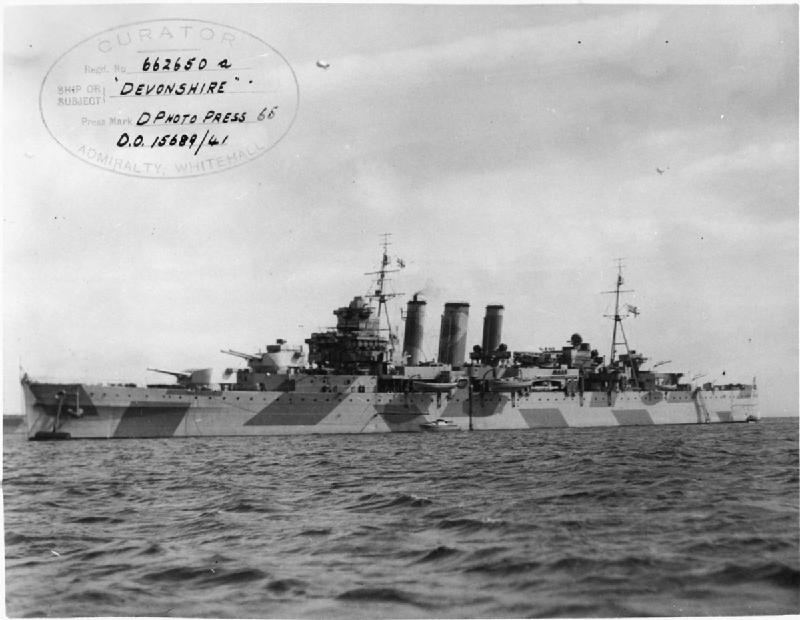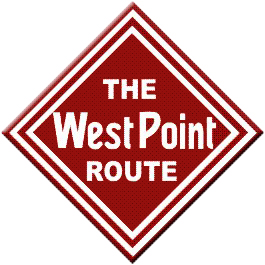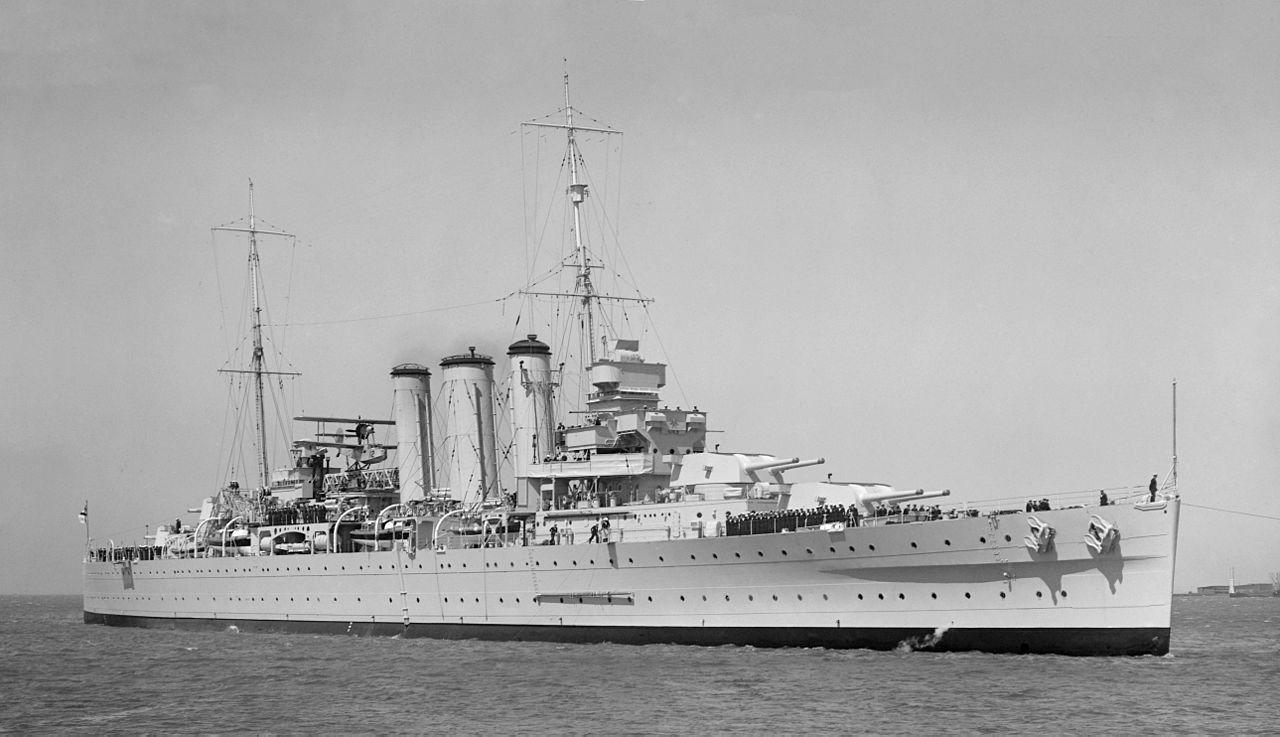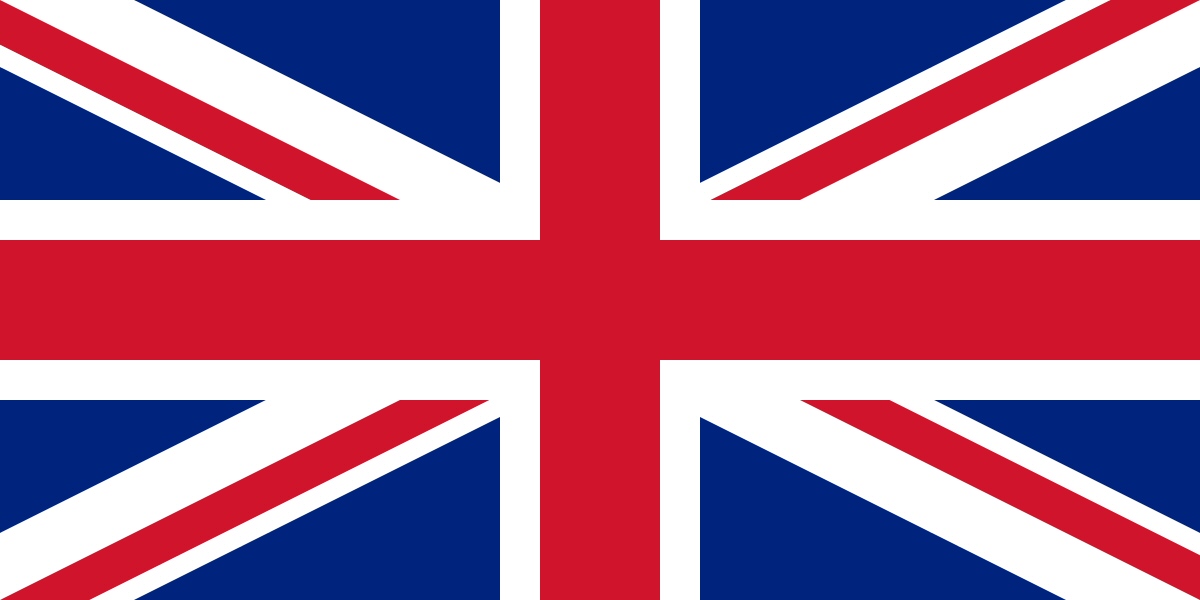History: HMS Devonshire, pennant number 39, was a County-class heavy cruiser of the London sub-class built for the Royal Navy in the late 1920s. The ship spent most of her pre-World War II career assigned to the Mediterranean Fleet aside from a brief tour with the China Station. She spent the first two months of the Second World War in the Mediterranean until she was transferred to the Home Fleet and became flagship of a cruiser squadron. Devonshire took part in the Norwegian Campaign in mid 1940 and evacuated much of the Norwegian Government in June. Several months later, she participated in the Battle of Dakar, a failed attempt to seize the Vichy French colony of Senegal in September. The ship remained in the South Atlantic afterwards and supported Free French efforts to take control of French Equatorial Africa in addition to searching for German commerce raiders.
Devonshire returned home in early 1941 and briefly rejoined the Home Fleet, during which time she escorted several aircraft carriers as they attacked German forces in Norway and Finland and covered the first convoy to the Soviet Union. Shortly afterwards, the ship was sent to the South Atlantic where she sank the Q-ship Atlantis. Devonshire was then assigned to the Eastern Fleet in the Indian Ocean and supported the Allied invasion of Madagascar in mid-1942. She then spent the next year escorting convoys before returning home to begin a lengthy refit. After it was completed in early 1944, the ship escorted various aircraft carriers for the rest of the war as they attacked targets in Norway.
After the German surrender in May 1945, she sailed to Norway and escorted two surrendered German cruisers from Denmark to the UK. Devonshire then began ferrying British troops home from Australia for the rest of the year. In 1947, the ship was converted into a training ship for naval cadets and served until she was sold for scrap in 1954.
Devonshire returned home in early 1941 and briefly rejoined the Home Fleet, during which time she escorted several aircraft carriers as they attacked German forces in Norway and Finland and covered the first convoy to the Soviet Union. Shortly afterwards, the ship was sent to the South Atlantic where she sank the Q-ship Atlantis. Devonshire was then assigned to the Eastern Fleet in the Indian Ocean and supported the Allied invasion of Madagascar in mid-1942. She then spent the next year escorting convoys before returning home to begin a lengthy refit. After it was completed in early 1944, the ship escorted various aircraft carriers for the rest of the war as they attacked targets in Norway.
After the German surrender in May 1945, she sailed to Norway and escorted two surrendered German cruisers from Denmark to the UK. Devonshire then began ferrying British troops home from Australia for the rest of the year. In 1947, the ship was converted into a training ship for naval cadets and served until she was sold for scrap in 1954.
Class: The County class was a class of heavy cruisers built for the Royal Navy in the years between the First and Second World Wars. They were the first post-war cruiser construction for the Royal Navy and were designed within the limits of the Washington Naval Treaty of 1922. Such ships, with a limit of 10,000 tons, standard displacement and 8-inch calibre main guns may be referred to as "treaty cruisers" (the term "heavy cruiser" was not defined until the London Naval Treaty of 1930.
The thirteen Counties were built in three distinct sub-classes: the Kent, London and Norfolk classes. They were the only 10,000-ton 8-inch gun, or "A", cruisers that the Royal Navy built. The Counties are remembered for their distinctive three-funnel layout and service in all the major naval theatres of the Second World War.
In an attempt to extract more ships from the treaty limits, the navy planned to construct 8,250-ton "B" ships; six of which could be built in place of five Counties. The extra ship that this afforded was an attractive proposition for a navy that had the immense peacetime commitments of empire. In the event, peacetime economies and politics intervened and only two B-type cruisers were built, a 6-gun modified County design; the York class.
The thirteen Counties were built in three distinct sub-classes: the Kent, London and Norfolk classes. They were the only 10,000-ton 8-inch gun, or "A", cruisers that the Royal Navy built. The Counties are remembered for their distinctive three-funnel layout and service in all the major naval theatres of the Second World War.
In an attempt to extract more ships from the treaty limits, the navy planned to construct 8,250-ton "B" ships; six of which could be built in place of five Counties. The extra ship that this afforded was an attractive proposition for a navy that had the immense peacetime commitments of empire. In the event, peacetime economies and politics intervened and only two B-type cruisers were built, a 6-gun modified County design; the York class.
Nationality: The United Kingdom, made up of England, Scotland, Wales and Northern Ireland, is an island nation in northwestern Europe. England – birthplace of Shakespeare and The Beatles – is home to the capital, London, a globally influential centre of finance and culture. England is also site of Neolithic Stonehenge, Bath’s Roman spa and centuries-old universities at Oxford and Cambridge.
Item created by: gdm on 2021-02-14 16:41:35
If you see errors or missing data in this entry, please feel free to log in and edit it. Anyone with a Gmail account can log in instantly.
If you see errors or missing data in this entry, please feel free to log in and edit it. Anyone with a Gmail account can log in instantly.









